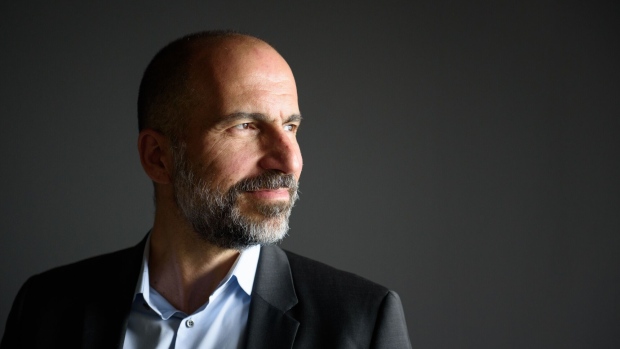Jun 8, 2023
Uber Eats Pledges to Slash Takeout Emissions and Plastic Waste
, Bloomberg News

(Bloomberg) -- Uber Technologies Inc. pledged to eliminate carbon emissions and “unnecessary” plastic waste from its growing delivery business by 2040, bringing it in line with goals at its ride-hailing arm.
The ride-hailing company said 100% of food delivery trips will be emission-free globally in 2040, with an earlier target of 2030 in European cities, enabled by regional policies. It also pledged to scrap all of what it called “unnecessary” plastic from deliveries globally by 2030 and to eliminate 80% by 2025 in Europe and Asia-Pacific.
Chief Executive Officer Dara Khosrowshahi is set to announce the commitments at an event in London on Thursday.
“With the scale we have globally, it’s just a responsibility on our shoulders,” said Uber Delivery Senior Vice President Pierre-Dimitri Gore-Coty, in an interview with Bloomberg. Uber Eats has 890,000 sellers in more than 30 countries. At least 14 million tons of plastic waste end up in the ocean every year, according to the International Union for Conservation of Nature. That pollution, which includes waste from takeout meals, is helping destroy marine species and habitats, and contributes to climate change.
Uber is better-known for the ride-hailing side of its business, but during pandemic lockdowns its takeout and grocery-delivery arm surged and in 2022 made up 44% of sales. That said, the passenger car service is responsible for more emissions proportionally because the average journey is longer and uses a four-wheeled vehicle, while short two-wheeler trips are more common for deliveries.
Uber committed in 2020 to eliminate ride emissions by 2030 in Europe, the US and Canada and 2040 globally, a goal which it said would cost the company $800 million by 2025. That same money will help pay for the new delivery emissions goal, while an extra as-yet unquantified pot of money will be spent on the packaging pledge, a spokesman said.
“We’re taking the hit,” Khosrowshahi said in an interview with Bloomberg Quicktake. “We’ve got to make it economically sensible for drivers. So for example, our take rate on electric rides is lower because right now generally EVs cost more than combustion engines.”
Uber is far from guaranteed to hit all its green targets. It’s also measuring the emissions “from the tailpipe,” for instance, not including the carbon cost of generating the electricity needed to power vehicles. The World Wildlife Fund and Closed Loop Partners will consult on Uber’s progress.
San Francisco-based Uber will encourage its couriers to switch to bicycles, electric bikes or mopeds, and electric cars. It’s partnered with electric bike-sharing and charging companies HumanForest, Zoomo, Gogoro and Gachaco to secure better prices, and will also extend its US vehicle partnerships, including a rental program with Hertz Global Holdings Inc. for Tesla Inc. electric cars.
Green packaging often costs as much as a third more than single-use wrapping, Gore-Coty said. He said Uber’s aiming to close the gap and has partnered with distribution company Bunzl in Europe to secure discounts for restaurants. Users will be able to choose restaurants and merchants based on green packaging in a new feature launching this week in London, Amsterdam, Paris, New York, San Francisco and Taipei.
Some foods, such as ramen, will prove trickier to transport without plastic, Gore-Coty acknowledged.
©2023 Bloomberg L.P.





